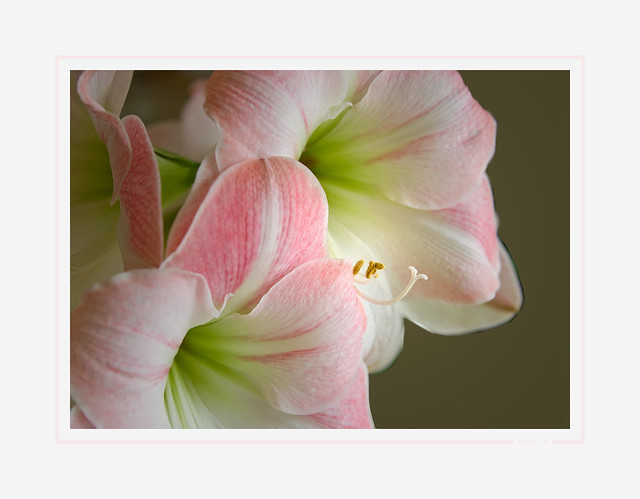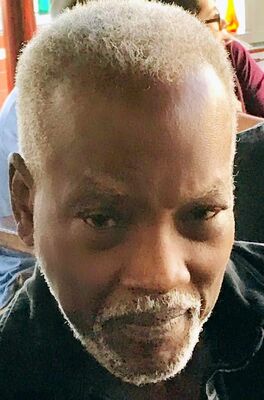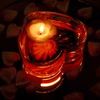Confused in CA
Feb 23, 2018 11:44:57 #
Hey RD I have the 7100 and use a 18-140 as my "walk around".I was using a Nikon 35mm 1.8 for indoors and tight spaces but needed something that allowed for more flexibility. Picked up a Sigma 17-50mm and tested it against the 35 at the same focal length and the Sigma was better. The 35 is very shap and best suited for group shots in my opinion.
Feb 23, 2018 13:14:26 #
Feb 23, 2018 14:28:38 #
ToBoldlyGo
Loc: London U.K.
rgrenaderphoto wrote:
Well, you're out of luck. Nobody here will have any opinions on the subject.
From personal experience, the most versatile medium-wide angle zoom for a crop sensor camera is the Sigma 16-35 f/1.4 ART. And you can find one between $700 and $800.
https://www.bhphotovideo.com/c/product/967344-REG/sigma_18_35mm_f1_8_dc_hsm.html
From personal experience, the most versatile medium-wide angle zoom for a crop sensor camera is the Sigma 16-35 f/1.4 ART. And you can find one between $700 and $800.
https://www.bhphotovideo.com/c/product/967344-REG/sigma_18_35mm_f1_8_dc_hsm.html
He means the 18-35mm Sigma Art f1.8. This is a great lens, the large aperture means backgrounds can be blurred nicely while the foreground is in sharp focus. This is common with larger aperture lenses. With your budget it's worth considering this point. It's one of the few DSLR zooming lens in existence with a constant aperture of 1.8. It will also leave you money left over. Very worth doing some research on it.
Feb 23, 2018 14:37:31 #
I have a Tamron 17-50mm f2.8 XR Di II VC LD (model B005). I have used it on my D80 and D7100 cameras. It produces very sharp images with great color. I also have the 18-140mm Nikon as a kit lens on the D7100 which produces very sharp images and, even though it doesn't open up to f/2.8, with the higher ISO range of the D7100, it produces superb images. I would highly recommend either lens. The Tamron is f/2.8 through its entire focal range and is available at B&H Photo for around $650.
Feb 23, 2018 14:52:22 #
rdrechsler
Loc: Channel Islands Harbor, CA
Thanks. I decided to go with the Nikon 18-140. Sadly, it’s going to arrive before the replacement for the D7200. No worries, I’ll be shooting with my Canon SX60HS the weekend ;-)
Feb 23, 2018 16:22:04 #
rdrechsler wrote:
I bought a used D7200 with a Nikon DX AF-S Nikkor ... (show quote)
f/stops are fractions. The numerator is the focal length (f) and the denominator is the number of times to divide it by to get the width of the aperture in the diaphragm. The width isn't important to anyone but an engineer, but the f/number IS important to photographers.
In practice, it's a way to get *approximately* the same exposure on different lenses. It's logarithmic, based on the square root of 2, where each whole stop lets in half, or twice, the light of the one next to it. (1.4, 2, 2.8, 4, 5.6, 8, 11, 16, 22 are some of the whole stops.) The LOWER the number, the WIDER the aperture and the more light it transmits. Just realize that some lenses actually TRANSMIT more light than others at the same aperture. The more glass involved, the less light gets through, but the difference is rarely more than half a stop, and usually not important if you use through the lens metering.
There are fixed aperture zooms (constant f/2.8, for instance), and variable aperture zooms like yours. The aperture at the long end of the zoom is often smaller than it is at the short end. This is an annoyance with flash photography and can be a problem in low light photography, but in good light, it doesn't matter a lot.
f/4.5 to f/5.6 is a slow zoom lens. Look for an f/2.8, or f/2.8 to f/4 zoom if you can find one in your price range. The AF-S DX NIKKOR 16-80mm f/2.8-4E ED VR is $1070.00. Used ones, in excellent condition, cost around $800.
https://www.keh.com/shop/nikon-16-80mm-f-2-8-4-e-ed-dx-af-s-vr-autofocus-lens-for-aps-c-sensor-dslrs-72-1.html
(KEH, Adorama, B&H, and Cameta Camera are popular, reliable online retailers. KEH is used only; the others sell new and used gear.)
Feb 23, 2018 17:09:35 #
I also have the Nikkor 55-300 VR lens and it's a great lens for not a lot of money. Wanting a wider angle I bought a used Sigma 15-30mm 3.5 to 4.5 DG lens for my Nikon D7000 (the lens has no internal focus motor) and recommend it highly for your D7200. I bought it used on ebay for about $265 from a top rated seller in excellent condition. I also like that it can autofocus from a foot away so I have used it for closeups as well. And the aperture goes all the way down to f22 at 15mm and f29 at 30mm.
Feb 23, 2018 23:32:03 #
rdrechsler wrote:
I bought a used D7200 with a Nikon DX AF-S Nikkor ... (show quote)
At $399, here's a bargain for you, and fast at f/2.8 throughout the focal range. I know that may not mean much to you right now, but trust me, it will some day. You may want to consider a Tamron 28-75mm, f/2.8 lens. I have had great results with it mounted on my Canon, and I have heard others say the same on a Nikon mount. See it here at B&H Photo
https://www.bhphotovideo.com/c/product/284402-REG/Tamron_AF09NII_700_28_75mm_f_2_8_XR_Di.html
A recent shot of mine with it
 Tickle Your Fancy by VMontalbano (autofocus), on Flickr
Tickle Your Fancy by VMontalbano (autofocus), on FlickrFeb 24, 2018 08:38:31 #
autofocus wrote:
At $399, here's a bargain for you, and fast at f/2... (show quote)
Yes, that’s a real sleeper lens! We had over 440 of those on portrait cameras at Herff Jones Photography Division from 2005 to 2011. I had one on a Nikon and one on a Canon.
Cheap, sharp, rugged, reliable, six year warranty... and great between f/4 and f/8. Usable at f/2.8 and f/11, but diffraction on APS-C and DX cameras usually makes f/16 to f/32 undesirable.
Feb 24, 2018 09:30:54 #
SusanFromVermont wrote:
The f/stop range lets you know the light-gathering... (show quote)
I had the Nikon 16-80mm f/2.8-4 lens. I was disappointed in it. It had a severe back focusing issue and its autofocus was a disappointment. It had slow autofocus and would hunt a lot. The 16-80mm also has much more distortion than the 16-85mm. It seems like a $500 lens that sells for $1000. You have the number of lens groups right but the total number of lens elements is the same. The 16-80mm has 17 elements in 13 groups. The 16-85mm has 17 elements in 11 groups. I ended up returning the 16-80mm and getting the 16-85mm. LensTip.com does extensive lens testing. Here's what they said about the distortion and autofocus of both lenses.
Distortion
------- 16-80mm f/2.8-4----16-85mm f/3.5-5.6
16mm-----(-5.21%)------------(-4.15%)
30mm-----(1.51%)-------------(0.43%)
50mm-----(2.11%)-------------(0.99%)
80mm-----(1.80%)-------------(-1.05% @85mm)
Nikon 16-80mm f/2.8-4
The Nikkor AF-S DX 16–80 mm f/2.8–4E ED VR seems to be a lens aimed at advanced amateurs of photography who use DX reflex cameras. Its price suggests you should get the best available mechanisms inside. Unfortunately it is only a suggestion and the autofocus SWM motor of the tested lens is a prime example. It seems its quiet work is its only asset. The motor is so slow that at shorter focal end of the spectrum, even in good lighting conditions, running through the whole scale and finding the focus takes significantly more than one second. It is at least two-three times longer than a time you would expect from such an instrument.
The accuracy doesn’t impress us either. At the shorter focal lengths the lens constantly improves and changes its own settings. We kept the same distance from the testing chart and aimed at the same point even without changing the focus but still the sharpness was set every time differently. It is true the differences were slight but still.
What’s more, the lens didn’t avoid back focus problems in their worst possible form so depending on the focal length value. The autofocus fared well only after applying 15-16 units of microcalibration at the shortest focal length, 6-7 units in the middle of the range and 3-4 units at the longer focal length.
Nikon 16-85mm f/3.5-5.6
The Nikkor 16-85 VR was equipped with an ultrasonic SWM motor - during its work you can hear just some quiet elements shuffling. When it comes to its quickness you can hardly express any reservations – it’s after all an amateur class lens. The Nikkor doesn’t break any records here but its performance is sufficient for a daily usage. We can’t flaw the accuracy either. In studio conditions the mechanism missed in less than 4% of shoots which we consider a very good result. We also didn’t notice any clear frontfocus or backfocus tendency.
Feb 24, 2018 11:18:55 #
CO wrote:
I had the Nikon 16-80mm f/2.8-4 lens. I was disapp... (show quote)
Thank you for the detailed review of the lenses. I realize real life performance is not always in the specifications, but that is a good place to start. [And, as I stated, I have no personal experience with this lens.] After that professional reviews and customer reviews can be a great help in making a decision. However, it is better to have the most recent information available. I looked at LenTips, and a search brought up a comparison, but it was dated 2015. Customer reviews I have read [with a reasonably large sample, and recently published] show that purchasers like both lenses, and there are complaints about both! But in general both are much liked. In the end, it comes down to the user/tester's experience with a certain example of the lens. Not knowing whether the reviews are from pros or amateurs, there is no way to know if the reviewer truly knows how to evaluate a lens. One review I read stated that the individual had problems with the 16-80mm lens but returned it in exchange for another of the same model and was then very happy with it. Apparently there have been quality issues that are not consistent from lens to lens, which is unfortunate. Definitely something Nikon should have already addressed but apparently has not.
I tried to find a more recent comparison, but could not. Perhaps when I have more time I will look again. One thing the OP can consider is purchasing a refurbished lens from Nikon. Those have been checked over thoroughly and brought up to factory specifications. If there were adjustments needed, then problems probably solved!
Feb 24, 2018 11:23:01 #
IDguy
Loc: Idaho
jkm757 wrote:
For a lens in the 18-55 range I recommend the Nikon 17-55 f/2.8. It's one of the best DX lenses that Nikon makes. You can pick up a used one from KEH camera for under $800.
https://www.keh.com/shop/nikon-17-55mm-f-2-8g-ed-if-af-s-dx-zoom-nikkor-lens.html
https://www.keh.com/shop/nikon-17-55mm-f-2-8g-ed-if-af-s-dx-zoom-nikkor-lens.html
You can get a new Sigmaa f2.8 17-50 for about 1/2 that. It has very good image stailization, which Sigma calls OS.
Feb 24, 2018 13:29:06 #
CO wrote:
I had the Nikon 16-80mm f/2.8-4 lens. I was disapp... (show quote)
Wow! I stand corrected.
It’s a shame Nikon does not make a faster, better zoom in that zoom range. f/3.5 to f/5.6 is mighty slow for a lens to be used indoors a lot.
It is true that samples vary in quality somewhat. But design is a factor, too. I remember the ancient 43-86 mm from the 1960s. Worst Nikon lens I ever used.
Feb 24, 2018 16:12:40 #
burkphoto wrote:
Wow! I stand corrected.
It’s a shame Nikon does not make a faster, better zoom in that zoom range. f/3.5 to f/5.6 is mighty slow for a lens to be used indoors a lot.
It is true that samples vary in quality somewhat. But design is a factor, too. I remember the ancient 43-86 mm from the 1960s. Worst Nikon lens I ever used.
It’s a shame Nikon does not make a faster, better zoom in that zoom range. f/3.5 to f/5.6 is mighty slow for a lens to be used indoors a lot.
It is true that samples vary in quality somewhat. But design is a factor, too. I remember the ancient 43-86 mm from the 1960s. Worst Nikon lens I ever used.
That f/3.5-5.6 max aperture is really slow for indoors. It's not a problem with studio strobes but with continuous LED lighting I've had to boost the ISO really high. I think you mentioned some continuous lighting in another thread that is more powerful than most. What was that lighting?
It's too bad that Nikon doesn't produce truly professional lenses in the DX format. It seems like the Nikon 17-55mm f/2.8 DX lens is their only really pro DX format lens. In the FX full frame format there are great choices like the 14-24mm f/2.8, 16-35mm f/4, 24-70mm f/2.8, and 70-200mm f/2.8. Of course, those can be used on cropped sensor cameras - it's just more weight than necessary.
That Nikon 43-86mm seems really bad. I don't have any experience but I just read Ken Rockwell's review of it. Why is it that manufacturers used to produce lenses with odd focal lengths that are not used anymore? I have a Konica Hexanon 52mm f/1.8 and a 57mm f/1.4 lens for my Konica Autoreflex 35mm camera.
Feb 24, 2018 16:18:19 #
ToBoldlyGo
Loc: London U.K.
CO wrote:
That f/3.5-5.6 max aperture is really slow for ind... (show quote)
Just an educated guess here. Maybe they would round off the focal length description today to say 40-85? Still not a common focal length, but could it be that descriptions are looser today?
If you want to reply, then register here. Registration is free and your account is created instantly, so you can post right away.






